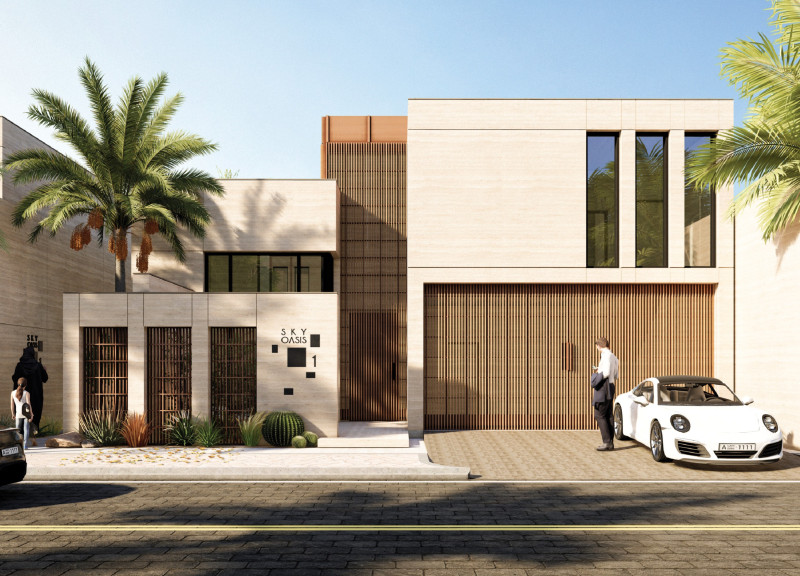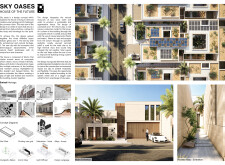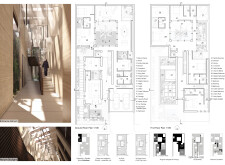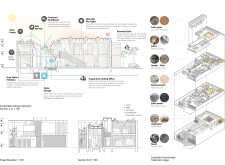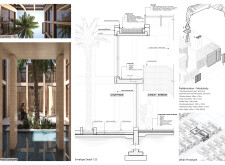5 key facts about this project
## Project Overview
Located in the United Arab Emirates, the House of the Future aims to address contemporary living challenges, particularly within urban contexts like Dubai. The design focuses on creating a harmonious living environment that emphasizes a connection with natural elements and Emirati heritage, while promoting sustainability as a core value.
### Spatial Organization and Materiality
The layout consists of blocks arranged around a series of courtyards, which facilitate airflow and connect the interior with the surrounding landscape. This configuration not only mitigates the harsh climate but also optimizes light and shadow through its innovative geometry.
Key features include:
- **Courtyards**: Essential to the design, these spaces enhance airflow and enable natural light penetration into living areas.
- **Material Selection**:
- **Rammed Earth**: Utilized as the primary structural component, it offers natural insulation and unique aesthetic textures.
- **Teak Wood**: Incorporated in beams and internal structures, providing warmth and visual appeal.
- **Fabric Shading**: Hanging fabrics diffuse sunlight, maintaining comfort in interior spaces without compromising natural light.
- **Areesha (Palm) Mashrabiya**: This traditional feature provides privacy while allowing air circulation and light ingress.
The introduction of water features, including grey water filtration systems, further supports sustainability initiatives by addressing water scarcity, an essential consideration in arid regions.
### Construction Strategy and User Experience
The design employs prefabricated materials to enhance construction efficiency and minimize environmental impact. Each modular component can be easily expanded or modified to accommodate changing family needs, reflecting a flexible approach to residential living.
Significant design elements include:
- **Sustainable Components**:
- **Solar Panels**: Positioned to maximize energy absorption.
- **Operable Skylights**: Facilitate natural ventilation, reducing dependence on mechanical climate control systems.
- **Evaporative Cooling Mechanisms**: Integrated water features and landscape designs contribute to maintaining lower indoor temperatures.
- **Spatial Arrangement**: The entrance leads into a communal atrium, while the upper floors are designated for private living spaces, establishing a clear division between public and private areas.
- **Pathways and Alleys**: These elements serve dual purposes, providing access and fostering interaction among residents to strengthen community ties.
Materials utilized in the project include rammed earth, teak wood, hanging fabric for sunlight diffusion, Areesha (palm) mashrabiya, solar panels, basalt, and native vegetation, all carefully selected to align with the environmental context and intended user experience.


